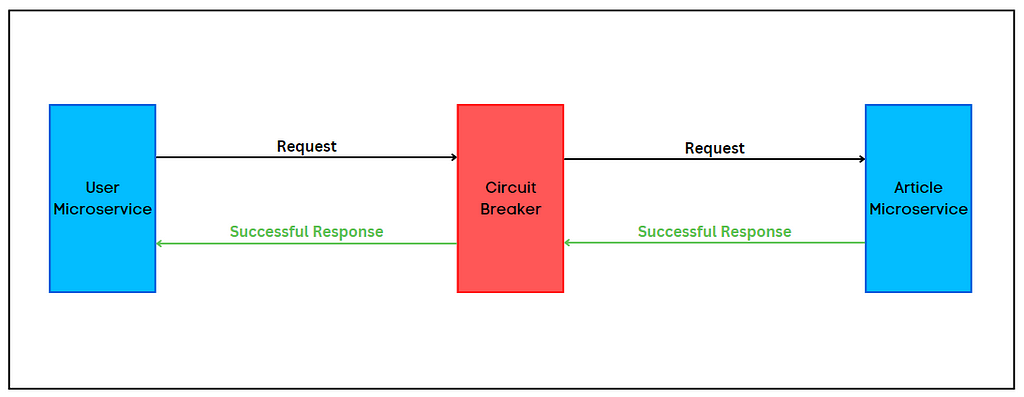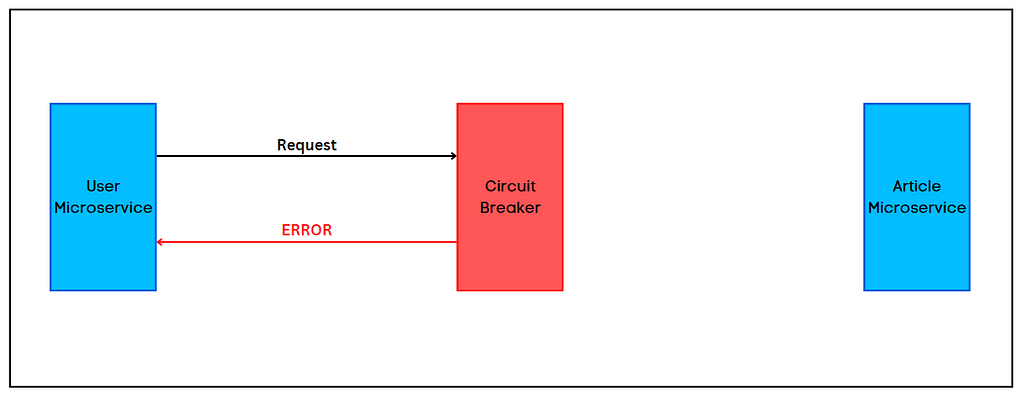This content originally appeared on Bits and Pieces - Medium and was authored by Chameera Dulanga
How to Use the Circuit Breaker Software Design Pattern to Build Microservices

Microservices architecture has become the new norm for large-scale applications. Because it has more advantages compared to traditional monolithic architecture. However, microservices also come with several challenges. One such challenge is preventing cascading failures. For example, network or service failure in one microservice can quickly cascade into other services and cause a system-wide failure.
So, in this article, I will discuss how to overcome this issue by using the circuit breaker pattern in microservices.
Why We Need Circuit Breaker Pattern?
In a microservices architecture, services have to communicate with each other. Sometimes, there can be service failures, or it takes significant time to respond to requests due to network connectivity issues.
For example, assume that there are 2 microservices named user and article. When the user service needs to communicate with the article service, it creates a new thread and sends a request to the article service. However, if there are any network issues or timeout failures from the article service, the user service will not get an instant response. Also, there is no way to inform the user service about the failure so it will wait for a response. As a result, the user service will send continuous requests to the article service until its resources are exhausted, resulting in user service failure.
Perhaps, some of you may think that the failure of one or two microservices is not a big deal. But you will understand the issue if you think about the big picture. A microservices architecture consists of a large number of interconnected microservices. So, a failure of a single microservice can have a cascading effect on all microservices and can significantly affect system availability.
Hence, developers needed a method to prevent this cascading effect between microservices in case of network connectivity issues, timeouts, or service unavailability. The circuit breaker pattern was introduced to address these issues in this context.
What is the Circuit Breaker Pattern?
The circuit breaker pattern is a design pattern that falls under the sustainable design patterns category. It allows developers to prevent cascading failures in microservices architecture by invoking remote services through a proxy.
For example, this pattern works the same as the electric circuit breakers at your home. The electric circuit breaker at your home will automatically turn off and protect your electric devices in case of abnormal behavior in the power supply. Similarly, the proxy used in the circuit breaker pattern literally works as an electric circuit breaker.
With the circuit breaker pattern, you can define a threshold value for the number of failures between 2 microservices. The proxy will count the number of failures between microservices and automatically stop the request sending for a specific time if the number of failures exceeds the threshold value. Once the timeout ends, the proxy will enable a limited number of requests to check whether the microservice is working. If those requests succeed, the proxy will allow microservices to continue normal operations. If not, the proxy will again start the timeout.
So, in simple terms, the circuit breaker pattern is a fail-safe mechanism to prevent cascading failures of microservices.
How Does Circuit Breaker Pattern Work?
Understanding and implementing the circuit breaker pattern is pretty easy. It has three states: Closed, Open, and Half Open.
1. Closed State

The initial state of the circuit breaker or the proxy is the Closed state. The circuit breaker allows microservices to communicate as usual and monitor the number of failures occurring within the defined time period. If the failure count exceeds the specified threshold value, the circuit breaker will move to the Open state. If not, it will reset the failure count and timeout period.
2. Open State

Once the circuit breaker moves to the Open state, it will completely block the communication between microservices. So, the article service will not receive any requests, and the user service will receive an error from the circuit breaker.
The circuit breaker will remain in the Open state until the timeout period ends. Then, it will move into the Half-Open state.
3. Half-Open State

In the Half-Open state, the circuit breaker will allow a limited number of requests to reach article service. If those requests are successful, the circuit breaker will switch the state to Closed and allow normal operations. If not, it will again block the requests for the defined timeout period.
As you can see, the concept of the circuit breaker pattern is pretty simple. Furthermore, there are specialized third-party libraries for almost every major language to simplify your work.
Third-Party Libraries for Implementing Circuit Breaker Pattern
Here are some of the most common third-party libraries for implementing the circuit breaker pattern.
- For Java SpringBoot — gs-cloud-circuit-breaker
- For TypeScript — circuit-breaker-js, @fastify/circuit-breaker
- For Python — pycircuitbreaker
- For .NET — Polly
Advantages of Circuit Breaker Pattern
- Helps to prevent cascading failures.
- Handles errors gracefully and provides better under experience.
- Reduces the application downtimes.
- Suitable for handling asynchronous communications.
- State changes of the circuit breaker can be used for error monitoring.
Challenges of Circuit Breaker Pattern
- Need good infrastructure management to maintain circuit breakers.
- Throughput issues in services if not properly configured.
- Difficult to test.
Final Thoughts
The circuit breaker pattern is beneficial in modern microservices architecture. It allows developers to prevent cascading errors due to network issues and improves application availability.
However, you should not use the circuit breaker pattern for every microservice implementation. Before implementing, you need to evaluate the improvements it brings to your system, your team’s technical knowledge, and the circuit breakers’ maintainability. If not, you won’t be able to extract the full potential of this pattern.
I hope you have found this article helpful. Thank you for Reading!
Build apps with reusable components like Lego

Bit’s open-source tool help 250,000+ devs to build apps with components.
Turn any UI, feature, or page into a reusable component — and share it across your applications. It’s easier to collaborate and build faster.
Split apps into components to make app development easier, and enjoy the best experience for the workflows you want:
→ Micro-Frontends
→ Design System
→ Code-Sharing and reuse
→ Monorepo
Learn more
- How We Build Micro Frontends
- How we Build a Component Design System
- Bit - Component driven development
- 5 Ways to Build a React Monorepo
- How to Create a Composable React App with Bit
Circuit Breaker Pattern in Microservices was originally published in Bits and Pieces on Medium, where people are continuing the conversation by highlighting and responding to this story.
This content originally appeared on Bits and Pieces - Medium and was authored by Chameera Dulanga
Chameera Dulanga | Sciencx (2023-01-11T07:41:45+00:00) Circuit Breaker Pattern in Microservices. Retrieved from https://www.scien.cx/2023/01/11/circuit-breaker-pattern-in-microservices/
Please log in to upload a file.
There are no updates yet.
Click the Upload button above to add an update.
